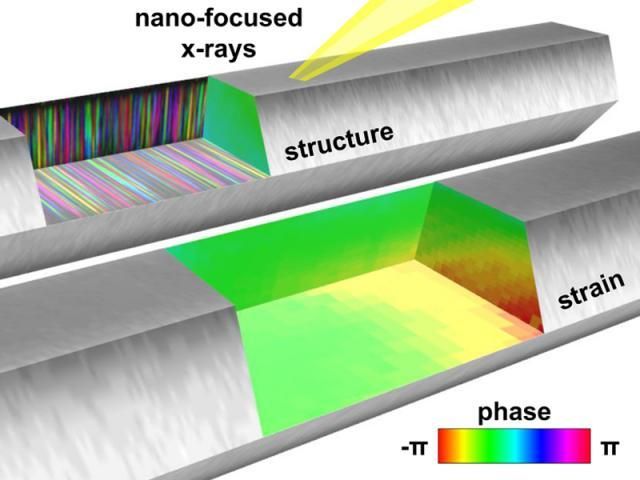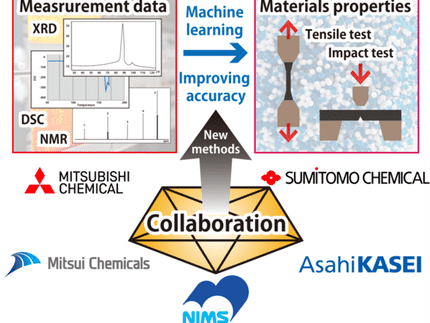Liquid crystals form nano rings
Quantised self-assembly enables design of materials with novel properties
At DESY's X-ray source PETRA III, scientists have investigated an intriguing form of self-assembly in liquid crystals: When the liquid crystals are filled into cylindrical nanopores and heated, their molecules form ordered rings as they cool – a condition that otherwise does not naturally occur in the material. This behavior allows nanomaterials with new optical and electrical properties, as the team led by Patrick Huber from Hamburg University of Technology (TUHH) report.
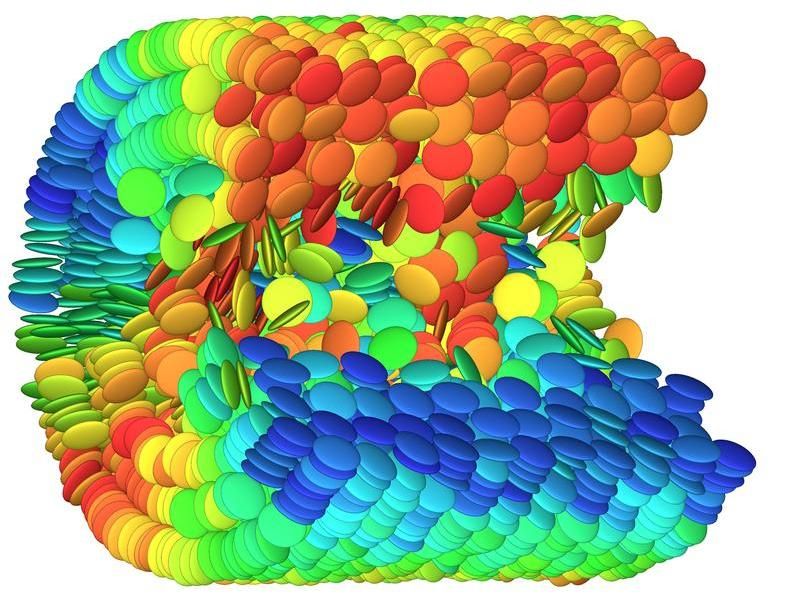
View into a largely ordered liquid crystal in a nanopore.
A. Zantop/M. Mazza/K. Sentker/P. Huber, Max-Planck Institut für Dynamik und Selbstorganisation/Technische Universität Hamburg (TUHH)
The scientists had studied a special form of liquid crystals that are composed of disc-shaped molecules called discotic liquid crystals. In these materials, the disk molecules can form high, electrically conductive pillars by themselves, stacking up like coins. The researchers filled discotic liquid crystals in nanopores in a silicate glass. The cylindrical pores had a diameter of only 17 nanometers (millionths of a millimeter) and a depth of 0.36 millimeters.
There, the liquid crystals were heated to around 100 degrees Celsius and then cooled slowly. The initially disorganized disk molecules formed concentric rings arranged like round curved columns. Starting from the edge of the pore, one ring after the other gradually formed with decreasing temperature until at about 70 degrees Celsius the entire cross section of the pore was filled with concentric rings. Upon reheating, the rings gradually disappeared again.
This change of the molecular structure in confined liquid crystals can be monitored with X-ray diffraction methods as a function of temperature and with high accuracy,” says co-author and DESY scientist Milena Lippmann, who prepared and participated in the experiments at the High-Resolution Diffraction Beamline P08 at PETRA III. “The combination of symmetry and confinement gives rise to unexpected, new phase transitions,” says Marco Mazza from the Max Planck Institute for Dynamics and Self-Organization in Göttingen where the process was modelled with computer simulations. For this purpose, MPI scientist Arne Zantop devised a theoretical and numerical model for the nanoconfined liquid crystals that confirmed the experimental results and helps to interpret them.
The individual rings formed stepwise at characteristic temperatures. “This makes it possible to turn individual nanorings on and off by small changes in temperature,” emphasizes main author Kathrin Sentker from TUHH. She had noticed this phenomenon through surprisingly step-like signal changes in laser-optical experiments. While such quantized changes usually only occur at very low temperatures, the liquid crystal system shows this quantum behavior already well above room temperature.
As the opto-electrical properties of discotic liquid crystals change with the formation of molecular columns, the nanopore-confined variant is a promising candidate for the design of new optical metamaterials whose properties can be controlled stepwise through temperature. The investigated nanostructures could also lead to new applications in organic semiconductors, such as temperature-switchable nanowires, explains co-author Andreas Schönhals from the Bundesanstalt für Materialforschung und -prüfung (BAM), the German Federal Institute for Materials Research and Testing, who is interested in the thermal and electrical properties of these systems.
“The phenomenon constitutes a fine example how versatile soft matter can adapt to extreme spatial constraints and how this can lead to new insights in physics as well as new design and control principles for the self-organisation of functional nanomaterials,” explains principal investigator Huber.
Original publication
Original publication
Kathrin Sentker, Arne W. Zantop, Milena Lippmann, Tommy Hofmann, Oliver H. Seeck, Andriy V. Kityk, Arda Yildirim, Andreas Schönhals, Marco G. Mazza, and Patrick Huber; "Quantized Self-Assembly of Discotic Rings in a Liquid Crystal Confined in Nanopores"; Phys. Rev. Lett.; 2018
Topics
Organizations
Other news from the department science

Get the chemical industry in your inbox
By submitting this form you agree that LUMITOS AG will send you the newsletter(s) selected above by email. Your data will not be passed on to third parties. Your data will be stored and processed in accordance with our data protection regulations. LUMITOS may contact you by email for the purpose of advertising or market and opinion surveys. You can revoke your consent at any time without giving reasons to LUMITOS AG, Ernst-Augustin-Str. 2, 12489 Berlin, Germany or by e-mail at revoke@lumitos.com with effect for the future. In addition, each email contains a link to unsubscribe from the corresponding newsletter.
Most read news
More news from our other portals
Last viewed contents

Agilent Technologies Spain, S.L. - Las Rozas de Madrid, Spain
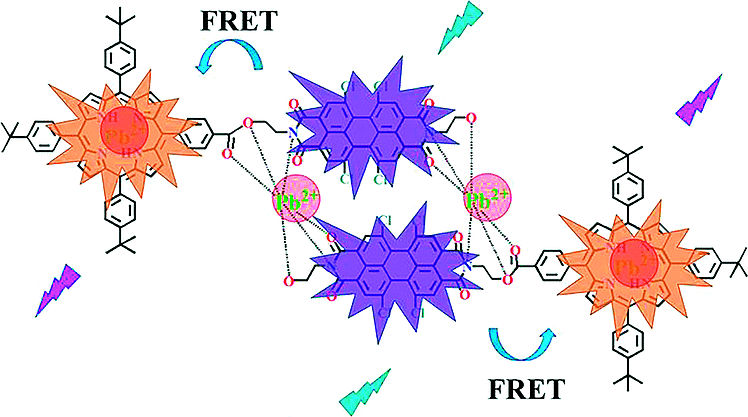
Color Change Unmasks Lead - Triplex-signal chemosensor for naked eye and spectrometric lead detection
Researchers synthesize magnetic nanoparticles that could offer alternative to rare Earth magnets

Bio- and chemocatalysis combined for green chemistry
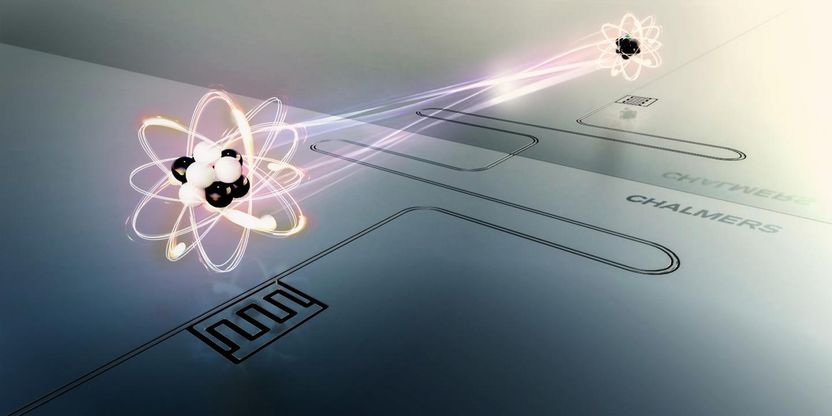
Chalmers researchers extend the lifetime of atoms using a mirror
